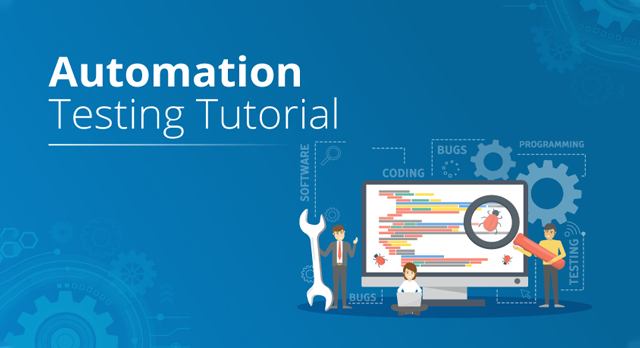From Manual to Automated Testing: A Comprehensive Guide to Transitioning Smoothly and Successfully
In the world of software application testing, the change from handbook to automated processes has actually come to be a progressively important transition for organizations seeking to improve efficiency and accuracy in their testing practices. The journey from handbook to automated testing is not without its difficulties, yet when come close to purposefully and with a clear plan in mind, the benefits can be considerable.
Benefits of Automated Testing
Automated testing offers various benefits, boosting performance and precision in software advancement procedures. Automated examinations can be run simultaneously on several gadgets and operating systems, substantially speeding up the testing phase compared to manual testing.
Additionally, automated screening makes sure a greater degree of precision in detecting problems. Considering that automated examinations adhere to predefined manuscripts, human error is minimized, resulting in even more trusted test results. Uniformity in screening is additionally boosted, as automated examinations execute the same steps exactly each time they are run. This consistency is important in making sure that all performances of the software program are extensively tested, reducing the likelihood of undetected bugs slipping via to manufacturing.
Picking the Right Devices

First of all, evaluate your demands and goals. Recognize the extent of your task, the innovations included, and the ability of your group. This evaluation will assist you figure out the functions and capacities you call for in your screening devices.
Secondly, consider the compatibility of the devices with your existing procedures and systems. Smooth combination with your present software application advancement lifecycle is important to ensure a smooth change to automation.
In addition, examine the scalability and versatility of the tools. As your screening needs advance, the tools ought to be able to adjust and suit modifications efficiently.
Lastly, factor in the assistance and neighborhood around the tools. Durable support and an active user area can supply useful resources and help when applying automated screening. By meticulously taking into consideration these facets, you can choose the right devices that straighten with your requirements and established the phase for an effective shift to automated testing.
Composing Effective Examination Manuscripts

When crafting test scripts, it is vital to take into consideration the details requirements of the software being examined and make certain that the manuscripts deal check over here with all crucial functionalities. Detailed and clear calling conventions for test manuscripts and test cases can enhance readability and maintainability. Additionally, incorporating mistake handling systems within the test manuscripts can assist in determining and dealing with concerns immediately.
Moreover, arranging test scripts right into modular elements can improve reusability and scalability, reducing redundancy and boosting efficiency in examination manuscript maintenance. Normal reviews and updates to examine scripts are critical to maintain rate with progressing software program demands and capabilities. By following these principles, testers can develop robust and reliable examination scripts that contribute significantly to the success of automated screening procedures.
Integrating Automation Into Workflows
By effortlessly incorporating automated screening devices like Selenium or Appium right into the software development lifecycle, teams can attain faster responses on code adjustments, leading to quicker pest discovery and resolution. This combination permits for continual testing throughout the growth process, guaranteeing that any kind of problems are identified early on, resulting in greater software program high quality. Proper assimilation of automation tools requires collaboration in between development, screening, and operations groups to develop a unified More hints workflow that maximizes performance and performance in supplying premium software program items.
Making Certain a Smooth Change
Successfully transitioning to automated screening involves careful preparation and mindful execution to lessen disturbances and optimize performance in the software development process - automation testing. To guarantee a smooth shift, it is important to start by carrying out a thorough assessment of the present screening procedures and recognizing locations where automation can bring one of the most significant benefits. Involving with all stakeholders early on at the same time, consisting of programmers, testers, and project managers, is important for amassing support and buy-in for the automation effort
Interaction is vital throughout this transition stage. Clear interaction of the goals, benefits, and assumptions of automated screening helps to manage any type of resistance or problems that may develop. In addition, providing appropriate training and resources for employee to upskill in automation tools and techniques is crucial for ensuring a successful transition.

Verdict
Finally, transitioning from handbook to automated screening supplies numerous benefits, consisting of raised efficiency and dependability. By choosing the appropriate tools, creating effective examination manuscripts, and incorporating automation perfectly right into operations, organizations can make certain a successful and smooth shift. It is essential to accept automation as a useful possession in software application screening processes to enhance overall quality and productivity.
In the realm of software program screening, the change from handbook to automated processes has become an increasingly vital change for companies looking for to improve efficiency and accuracy in their screening techniques. Automated examinations can be run simultaneously on multiple devices and running systems, significantly speeding up the testing stage contrasted to hands-on screening. Uniformity in screening is likewise improved, as automated examinations implement the exact same steps precisely each time they are run.To make certain the effective execution of chosen testing devices, the production of efficient test manuscripts plays a critical role in validating the capability and efficiency of automated processes - automation testing. By adhering to these concepts, testers can produce durable and efficient test manuscripts that contribute substantially to the success of automated testing processes
Comments on “Reliable Automation Testing: Enhancing Software Program Integrity and Rate”